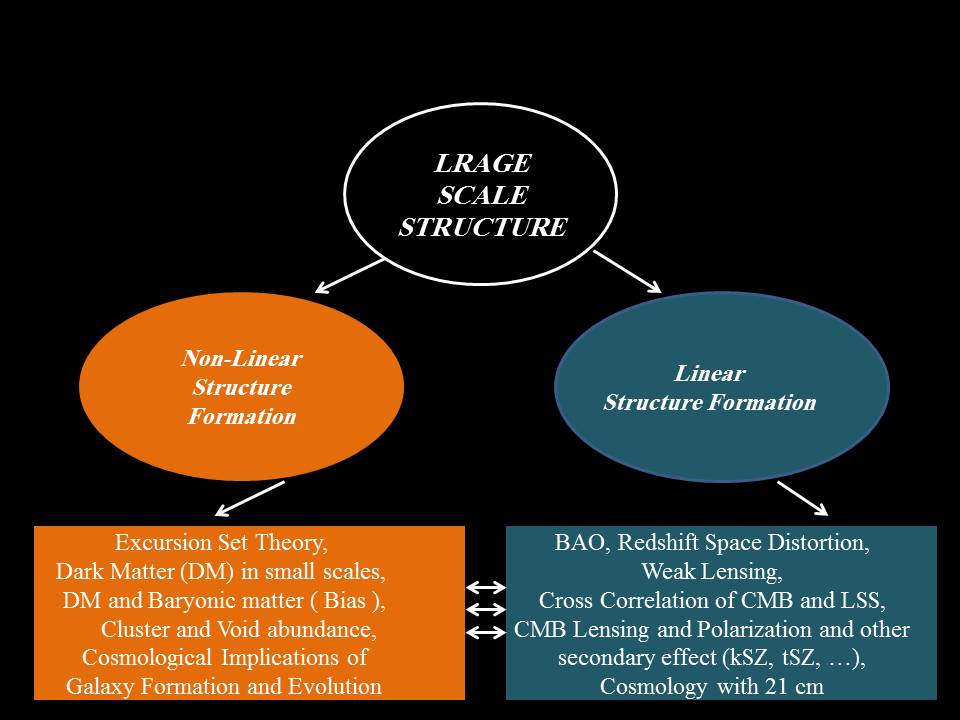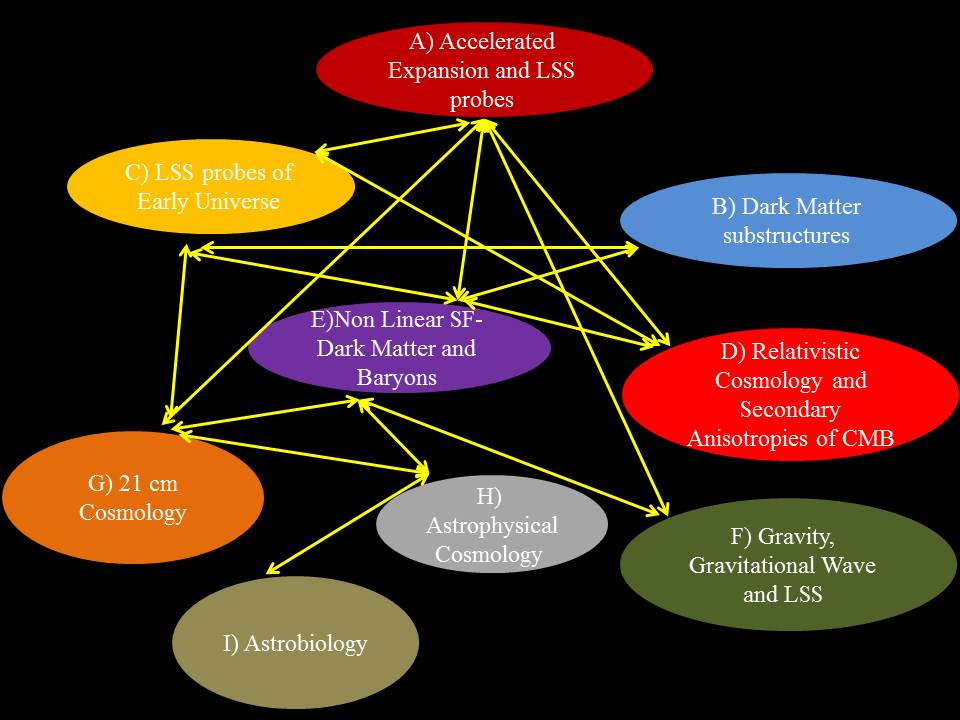Research Interest :
General Information: Home About Me CV Contact /// Physics Department SUT Cosmology Group of Sharif University of Technology
Academic Activities: Research Interest Publication Projects Collaborators My Students Courses Cosmology Talks درس نامه ها
Other Activities: Science Outreach Outside Physics Articles News Press Links Photo Gallery فارسی Հայերէն
Research Interest :
My main research topic is the study of
the
Large Scale Structures
(LSS) of the Universe in order to answer
the fundamental questions in cosmology such as the cause of the accelerated
expansion of the Universe
(Dark Energy), the physics of the unseen skeleton
of the structures
(Dark Matter) and the scenario that will describe
how all this begins
(The Physics of the Early Universe).
** My students and I have Research Group Meeting on the topics discussed below in details,
Each Saturday @ 17:00 in Information center of Centtral Library (ground floor) of SUT - This is the schedule for Fall 2019 **
The above fundamental questions can be studied by Investigation of Large Scale Structures in Universe. In general this can be divided in to two regimes of Linear Structure Formation and Non-Linear Structure formation. (As the Figure below) Note that they are tightly interconnected.
THIS MEANS THAT OUR RESEACH GROUP IS MAINLY DIVIDED IN TWO SUBGROUPS due to DIVISION.

The above fundamnetal questions (Dark
energy, Dark Matter and Early Universe) can be studied in smaller and more detailed questions as shown in the graph below and
the list become afterwards:

A) LSS & the Accelerated expansion of the Universe
The LSS observations like the distribution of the galaxies, weak gravitational
lensing, redshift space distortion, baryon acoustic oscillation and … are
observational tools that can probe the deviation from GR in cosmological scales,
in order to study the physics of dark energy and gravity.
In this path of research we study the question that how LSS observations can distinguish between DE and MG models .
Articles related to this area of research are by me with my collaboratores are:
6) http://arxiv.org/abs/1510.01720
5) http://arxiv.org/abs/1004.3360
3) http://arxiv.org/abs/0904.4390
2) http://arxiv.org/abs/0705.0889
1)
http://arxiv.org/abs/astro-ph/0701013
5
4
2
B)Dark Matter Substructures
* Articles related to this area of research are by me with my collaboratores are:
2) http://arxiv.org/abs/1310.5412
1)
http://arxiv.org/abs/1101.5487
C) The primordial Universe and LSS
* Articles related to this area of research are by me with my collaboratores are:
6) http://arxiv.org/abs/1406.7277
5) http://arxiv.org/abs/1405.7317
4) http://arxiv.org/abs/1308.2874
3) http://arxiv.org/abs/1306.6932
2) http://arxiv.org/abs/1305.0813
1)
http://arxiv.org/abs/1303.4368
D)Relativistic Cosmology
The propagation of light in inhomogeneous universe is effected by gravitational lensing, peculiar velocity of the source and observer, Integrated Sachs- Wolfe effect and... .This corrections are defined under the concept of the relativistic cosmology. Studying of these effects will open up new venue to study the nature of dark matter and dark energy.
* Articles related to this area of research are by me with my collaboratores are:
2) http://arxiv.org/abs/1412.8457
1)
http://arxiv.org/abs/1411.7010
E
One of the interesting questions in Cosmology, is the study of the nonlinear structure formation, the evolution and formation of dark matter halos, the process of hosting the baryonic matter and the relation of dark matter and baryonic matter known as the bias. The study of the distribution of over and under dense regions (voids) using the excursion set theory is one of the areas of interest. Recently we develop a new formalism to study the Excursion set theory known as Matrix formalism.
4) Farnik Nikakhtar (SUT) / (B.Sc.) / (Dec 2015 - ?)
3) Abtin Shahidi (SUT) / (B.Sc.) / (Feb 2015 - Sep 2016)
2) Mohammadreza Ayromlou (SUT) / (M.Sc.) / (Sep 2014 - Aug 2016)
1) Arghavan Shafiee (Alzahra) / (M.Sc.) / (Sep 2012 - Mar 2015)
F)CMB Lensing and Polarization
2
2) Mohammad Ansari (SUT) / (M.Sc.) / (Sep 2015 - ?)
1) Farbod Hassani (SUT) / (M.Sc.) / (Sep 2014 - 2 August 2016)
1) Elham Eftekhari (SUT) / (B.Sc.) / (Sep 2014 - Feb. 2015)